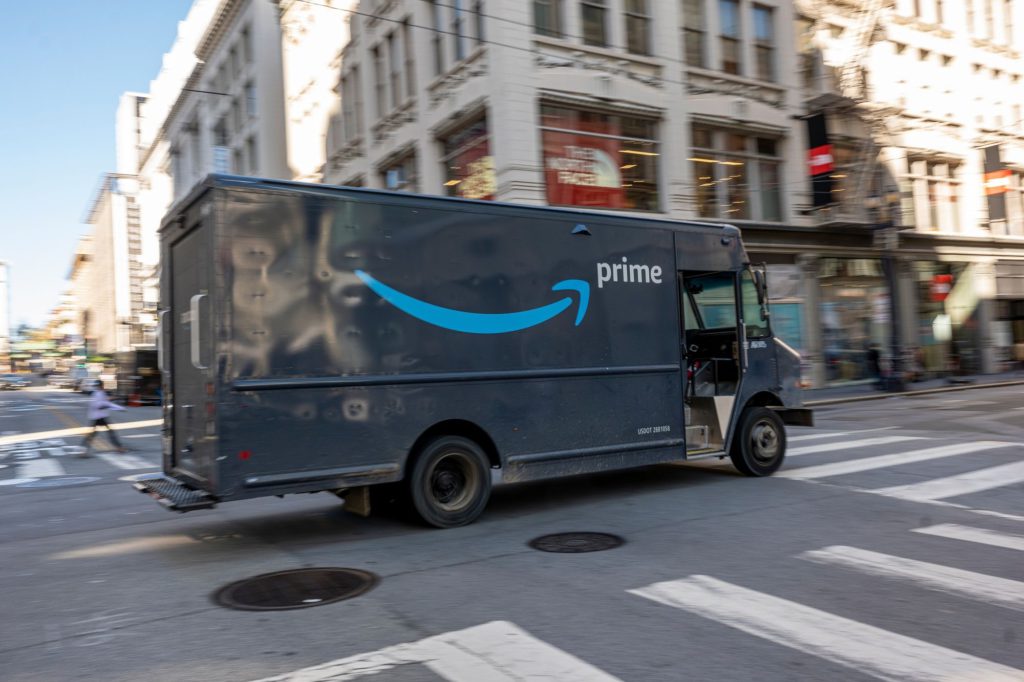Amazon.com Inc.’s second Prime sale this year has generated little enthusiasm on social media, a sign of consumer fatigue and a potential harbinger for the holiday shopping season.
(Bloomberg) — Amazon.com Inc.’s second Prime sale this year has generated little enthusiasm on social media, a sign of consumer fatigue and a potential harbinger for the holiday shopping season.
Twitter mentions of “Prime Early Access Sale” on the day the event was announced last month fell 70% compared with mentions for the previous event in June, according to analytics firm Sprout Social Inc. And buzz about the two-day sale that begins Tuesday has been waning, the opposite of what happened during the run-up to the summer event.
“The data suggests possible fading consumer enthusiasm around seasonal promotions,” said Mike Blight, a market research manager at Sprout. “Announcing a second, similar campaign during the crowded holiday promotion season likely contributed to the lack of engagement.”
Retailers are bracing for a lackluster holiday that will require deep discounts to move a glut of inventory. Many consumers, meanwhile, are planning to cut back because higher food and fuel costs have left them with less disposable income. US online spending in November and December will grow just 2.5% this year to $209.7 billion, according to Adobe Inc. That would be a big slow-down from last year’s gain of 8.6%.
Still, Amazon has an opportunity to win market share even if shoppers pull back, helping the e-commerce giant stand out when investors pick holiday winners and losers, according to Scott Gravelle, who runs the robotic logistics firm Attabotics in Calgary. As an online marketplace with millions of merchants, Amazon offers a broader selection of goods than traditional retailers without having to buy inventory.
“There’s a battle about to happen for market confidence about who captures more consumer spending dollars when shoppers spend less,” Gravelle said. “I think Amazon has a bit of an advantage.”
The Seattle-based company launched Prime Day in 2015 to attract new subscribers who now pay $139 a year for shipping discounts, video streaming and other perks. The event helps Amazon lock in shoppers before the holidays and deepen its relationship with existing customers by offering them deals on Amazon gadgets and other goods. This is the first time the company is hosting two big Prime member sales in the same year. Amazon is touting hundreds of thousands of deals on electronics, appliances, toys and other products to lure shoppers.
But consumers should be wary of what’s shown as a steep discount, according to research from marketing professors at three universities that was published this month in Marketing Science. They discovered a phenomenon they call “Price Increase and List Price Synchronization,” when a merchant significantly increases the “list price” of a product to make a discount look like a bargain.
In reality, shoppers often end up spending more for the item than what it usually costs, they said. The researchers, who first studied prices for almost 15,000 products on Amazon in 2016 and 2017, said the phenomenon has continued this year — also on other sites, including Walmart.com.
“It is really deceptive because they frame a price increase as a discount,” said Jinhong Xie, a marketing professor at the University of Florida’s Warrington College of Business, who worked on the study. “This is a very effective way to mislead consumers.”
Amazon spokeswoman Megan Lagesse said the study “doesn’t accurately represent the shopping experience today.” She declined to say what has changed since the researchers first conducted their study five years ago.
More stories like this are available on bloomberg.com
©2022 Bloomberg L.P.











